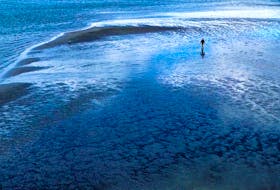SUMMERSIDE - An investigation by P.E.I.’s Chief Public Health Officer, Dr. Heather Morrison, has concluded that students attending Three Oaks Senior High were not put in danger during the abatement and construction phases of the Summerside school’s ongoing major renovations.
The school sent the results of the investigation in an email to parents on Monday afternoon.
Parents had raised concerns about alleged insufficient protections for students and potential exposure to harmful material during a period between March 2017 to May 2018.
Students continued to attend classes throughout the renovations to the school, except during the summer of 2017.
RELATED: Concerns raised about safety of students and staff at TOSH
Morrison said her office decided to undertake an investigation and review of data to determine whether students were indeed exposed to harmful material and, if so, how severe it was.
The review examined potential exposure to particulate matter, as well as lead dust and asbestos.
It found no significant student exposure to lead dust or asbestos during the stated period.
“The risk mitigation processes used in the abatement and construction work are designed to protect students from exposure to hazardous materials. The time-limited events where there was an inadvertent lapse in abatement and construction protocol, do not pose a short or long-term health risk to students,” said Morrison in the report.
However, it was also indicated that there was evidence to indicate potential exposure of some students to slightly elevated levels of particulate matter at levels above Health Canada’s 24-hour exposure guideline for short time periods near air quality monitoring locations.
But because there was no abatement of hazardous materials ongoing at the time of these spikes in particulate matter, students would not have been exposed to dangerous material.
“We found no evidence of long-term exposure to elevated levels of particulate matter.”









